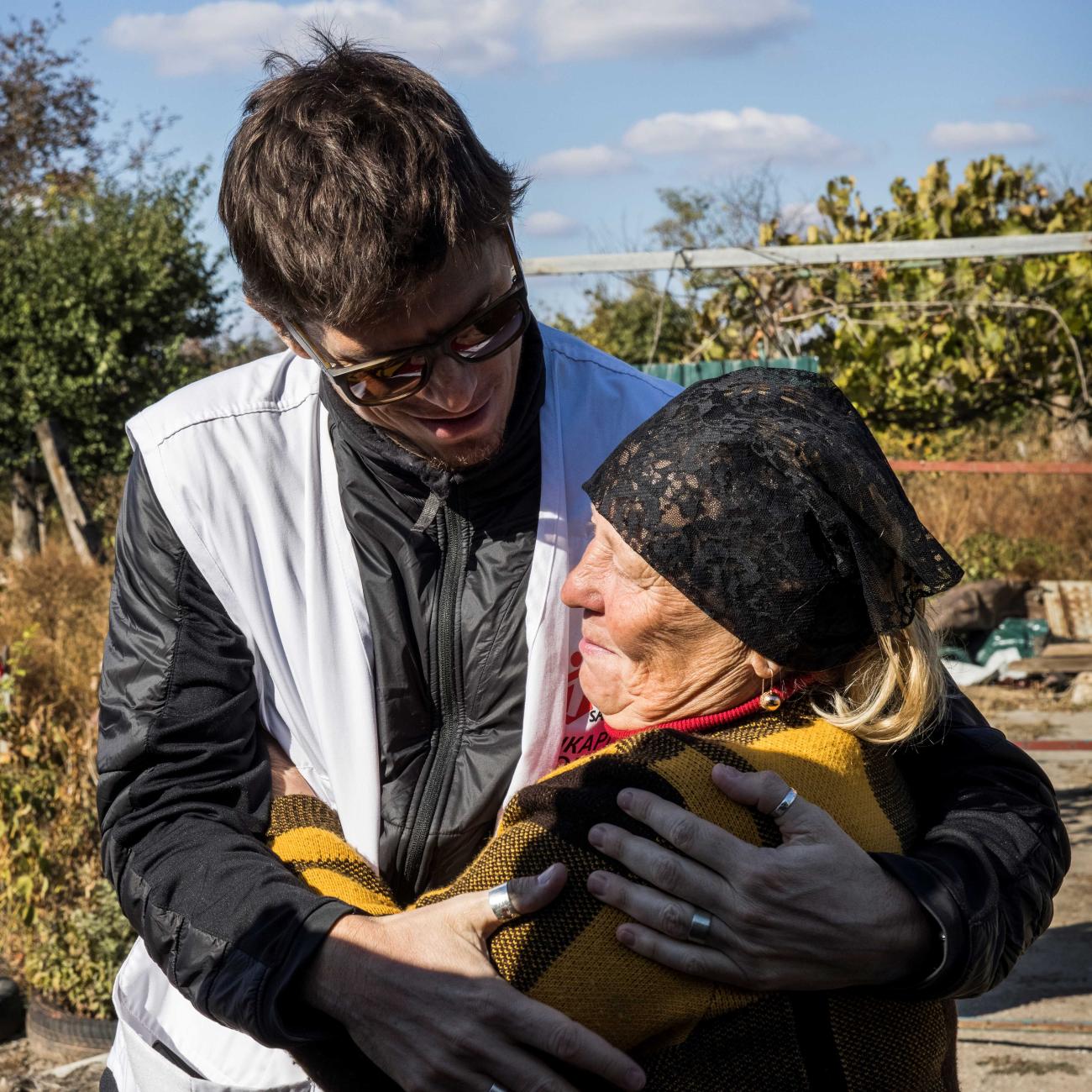Within days of his inauguration, President Joe Biden followed through on his promise to get straight to work fighting COVID-19, swiftly signing numerous executive orders aimed at mitigating the pandemic. These directives include everything from enforcing mask-wearing to enhancing worker safety, increasing testing to reopening schools safely, and reducing racial and ethnic disparities. Yet a close look at them reveals there is still much to be done.
Over a year into the pandemic, much of the population is worn out, tired perhaps from trying to adhere to a confusing set of mixed messages from federal, state, and local officials. Biden's orders provide clearer direction. For example, he signed an executive order requiring masks to be worn on federal property, at airports, and on interstate transit, though he lacked the legal authority to enforce a nationwide mandate for other locales. But his actions to date are not nearly enough.
Here are five ways the new administration can build on Biden's early executive orders to fight the pandemic:
1. Mass Produce Rapid, Self-Administered Tests and Enforce Quarantine Measures
To date, Biden's COVID-19 strategy seems to be focused on two fronts: deploying a medical solution such as vaccines, and enforcing a limited set of public health measures such as mask-wearing and increased use of personal protective equipment (PPE). But these efforts leave out a critical tool that other countries like Australia, China, and Singapore have used to bring community transmission of COVID-19 down to nearly zero: widespread testing and mandatory isolation and quarantine of those at risk of spreading disease.
By establishing a COVID-19 Pandemic Testing Board via executive order, Biden demonstrated a commitment to rapidly expanding testing and boosting the supply chain, something the previous administration miserably failed to accomplish. But the administration must place a greater focus on mass producing self-administered, rapid antigen tests, something I have advocated for repeatedly and which would drive down prices to less than $0.50 per test.
A recent deal the United States struck with Australian rapid test manufacturer Ellume is the wrong approach. Shipping the tests across the globe wastes precious time, the tests themselves are far too expensive, and fall 2021 is far too long to wait for domestic mass production. The FDA needs to move quickly to grant emergency authorization for cheaper, rapid paper-strip tests.
Using a "dimmer switch" to "dial" up and down restrictions according to infection rates
Beyond widespread testing, the focus should be on what happens when people test positive or have been in close contact with someone who has. Currently, people are asked to quarantine but little is done to ensure they can adequately adhere to the request. For single-income households or low-wage earners such as delivery drivers, isolation and quarantine are more than an inconvenience, they are a path toward poverty, bankruptcy, or worse.
We need to pay those with verified infections to isolate at home for fourteen days and provide more support to others asked to quarantine. Calling on Congress to renew the requirement for emergency employer paid sick leave is a good start, but the new administration should do more. If every American had inexpensive tests to assess themselves twice a week and the ability to quarantine, without financial burden, should they prove infected, we could significantly reduce the rate of community transmission. This would also help fulfill Biden's goals of safely reopening schools, childcare facilities, and local businesses.
2. Give Local Government and Communities Consistent Guidelines
The CDC's policy encouraging Americans to physically distance and avoid large gatherings is too vague and open to misinterpretation. The new administration needs to work with state and local governments to set consistent caps on gatherings, to define essential and non-essential activities, and to put restrictions on travelers arriving from abroad or from a neighboring state.
These policies should be adjusted predictably as infection levels change, so the public is assured that these restrictions are not permanent. Biden has usefully described using a "dimmer switch" to "dial" up and down restrictions according to infection rates, which may resonate with members of the public who are increasingly scarred by the indefinite and abstract term "lockdown."
Australia has regularly adjusted local restrictions on indoor and outdoor gatherings and household visitors based on infection rates in each state and communicated the changes to the media and public in daily press conferences. The United States may struggle to emulate this approach because Americans became accustomed to a complete lack of restrictions under the Trump Administration, but it's still critical to provide all Americans clear guidance on what they can and can't do based on the rate of infection in their community.
Likewise, U.S. states need consistent guidelines on when to trigger local lockdowns, based on mortality and positivity rates and hospital capacity. Consider the case of New York: as cases escalated there in the fall, Governor Andrew Cuomo pledged to lock down neighborhoods where positivity rates exceeded 4 percent. Yet when cases began to surge, Cuomo scrapped the plan and allowed schools, restaurants, and bars to remain open, which confused parents, school administrators, and business owners alike. Consistent lockdown guidelines will encourage adherence and provide a clear pathway to reopening.
3. Accelerate the Development of Therapies
Another executive order signed by Biden aims to accelerate the development of novel therapies to treat COVID-19. The administration should be commended for advocating for the inclusion of populations who have been historically underrepresented in clinical trials to ensure a more equitable drug development process. While a welcome change from the Trump administration, whose delay in developing treatments was inexcusable, the order is light on details about how research will be accelerated.
The global battle against HIV has shown that antivirals can successfully control an epidemic
The global battle against HIV has shown that antivirals can successfully control an epidemic, and now we need to develop direct, powerful, fast-acting antiviral drugs that can be given to patients in the early stages of COVID-19 infection before the virus causes them severe illness. As early as May 2020, I wrote about a study by a group of physicians in Hong Kong that reported COVID-19 responded to a cocktail of antiviral drugs, reducing recovery time for patients with mild to moderate symptoms from twelve to seven days. The drugs work on SARS-CoV-2 itself, targeting the functions of the virus and preventing it from replicating in the body. But the Trump administration touted Remdesivir instead, without sufficient data to back that claim.
4. Remove Barriers to Vaccination
As the United States broadens criteria for vaccination to include healthy people as young as 65, we have witnessed how woefully unprepared each state is to efficiently and equitably distribute vaccines. Online booking portals are frequently crashing and hotlines are overloaded. In many cases, only the tech-savvy, with the luxury of unrestricted computer and internet access and unlimited time, can secure an appointment.
Biden's plan to create a public health workforce may rectify some of these inequities. Every state should roll out or expand a vaccine booking assistance hotline. Every neighborhood should have a mobile outdoor appointment booth, staffed by helpful assistants. Programs that already serve vulnerable communities such as Meals on Wheels, food pantries, religious organizations, and homeless shelters are natural partners for ensuring that no one is left behind in vaccine distribution.
Biden has acknowledged these vast health disparities by appointing a health disparities advisor and creating a COVID-19 Health Equity Task Force, commendable and historic actions, but we have yet to see how these initiatives will play out in practice.
5. Ensure Worker Safety
Biden called upon the federal government to issue long overdue science-based guidance for reducing workers' risk of COVID-19 exposure, and allocated funds in his COVID-19 budget to enforce those health and safety requirements. Previously, only fourteen states have adopted comprehensive worker safety protections, the adoption of national requirements will have a profound impact on workplace transmission. Biden also requested the Department of Labor consider clarifying that workers who refuse unsafe working conditions can still receive unemployment insurance. This order is a positive step towards ensuring that Americans don't have to choose between their safety and a paycheck. But these regulations, along with the emergency sick leave requirement, need to apply to all workers, including gig workers such as delivery and ride-share drivers
Americans don't have to choose between their safety and a paycheck
By enacting these COVID-19-related executive orders, in just a few days Biden has already instilled more confidence in his administration's ability to fight the pandemic than the Trump administration did in an entire year. But inheriting a crisis of this magnitude will require unprecedented and ambitious policy changes beyond what the current executive orders propose. Mass rapid testing needs to be swiftly and cheaply rolled out in order to curb transmission and safely reopen schools and businesses. Public health measures such as consistent quarantine and lockdown protocols cannot be ignored. Vaccines need to be easily accessible to all and new therapies to treat COVID-19 patients need to be accelerated. Implementing these strategies in tandem with the executive orders will allow the Biden administration to begin controlling the pandemic.





